FOOLING THE UNDERTAKER, PT. II (1900)
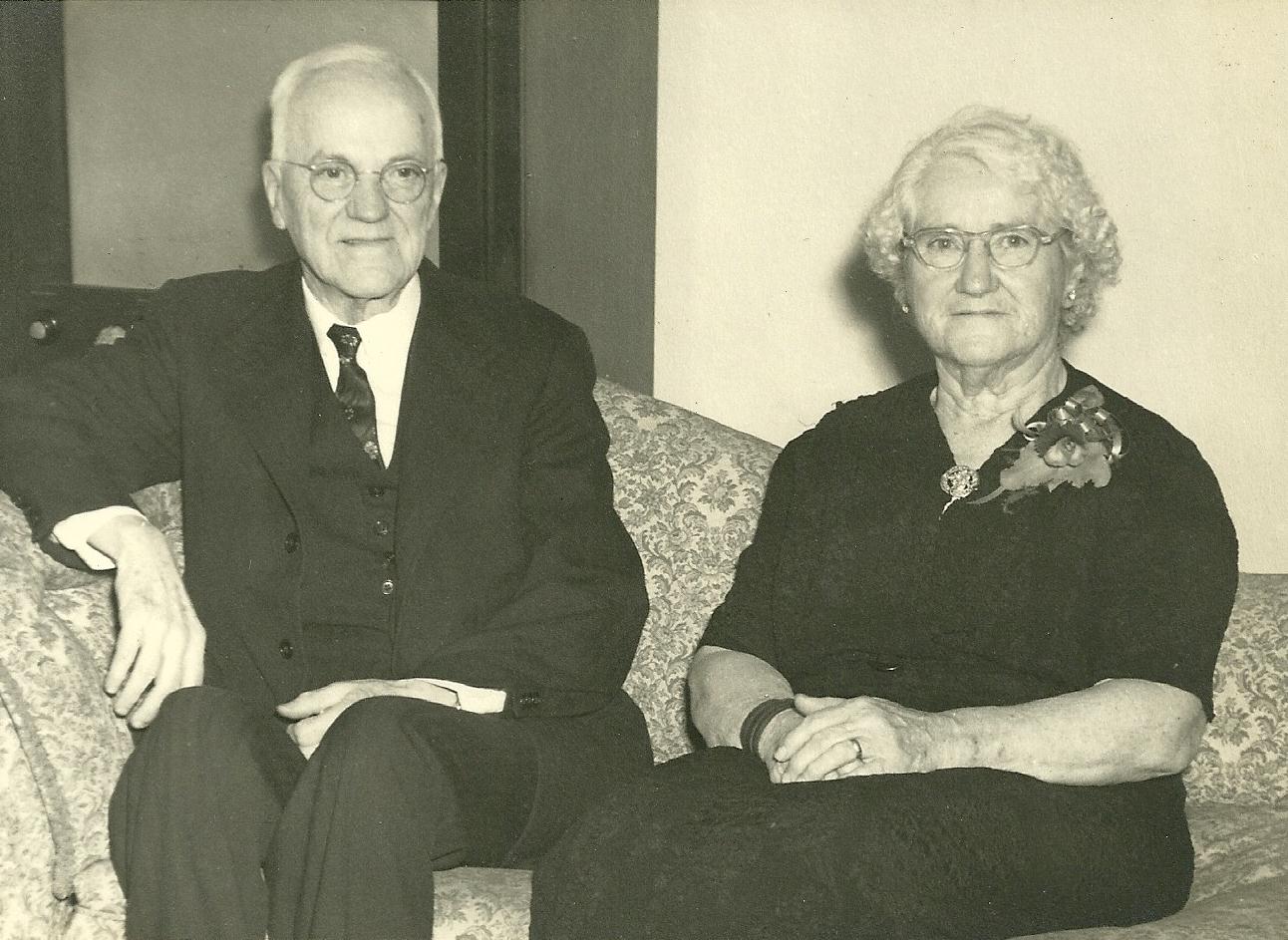
(Continued from Part I of Fooling The Undertaker)
The first time that Park returned to Ralph Avenue for his Miss Twaddle, the watchful Twaddle boys were there to meet him. They refused to allow Miss Twaddle to see Park, and so he returned home both frustrated and empty-handed.
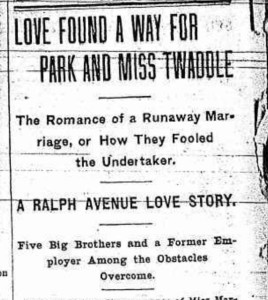
Hardcastle, the undertaker (and Park’s former boss), was another obstacle to overcome – he, too, had never married. And while Park was sure of Hardcastle’s eagle’s eye, he was just as certain that Hardcastle’s hearing had not been cured a few years ago by Dr. Copeland’s quack patent medicine.
So, when Park returned the second time in late May of 1900, he had already planned their escape, guiding Miss Twaddle’s actions and informing her where to meet him. Miss Twaddle would tiptoe down the stairwell, being exceedingly quiet. When she reached the door, she would walk in the opposite direction of Hardcastle’s parlor and down Macon Street toward Saratoga Square.
On this second visit, Park was successful. Meeting up with Miss Twaddle, he spirited her away with him – and away from her life on Ralph Avenue.
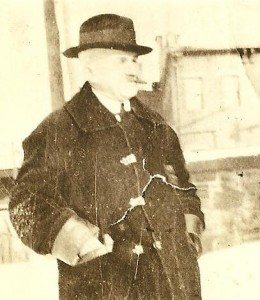
Afterwards, when the couple made their way safely out of the borough and up to Connecticut, where Park had set himself up as a laborer on a farm, “someone” wrote an anonymous letter to the local newspaper which framed the affair as an “against all odds” love story, casting the Twaddle boys and Hardcastle, the undertaker, as the story’s villains.
The letter, entitled “The Runaway Marriage or How They Fooled The Undertaker,” told the preceding tale and explained why it was too late for Park’s antagonists to chase after the young couple:
“It will do them no good to watch them any more. They will first take a trip to Washington and then through New York State and wind up in Connecticut, where Mr. Park has taken a large farm, which he will stock and run to its fullest extent.”
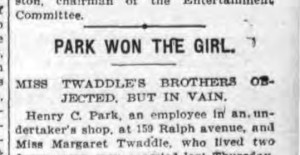
His letter continued: “The joke of it all is that Mr. Park came near marrying some one else’s sister, but Miss Twaddle happened to pass the undertaker’s establishment where Mr. Park was employed and the boss introduced them.”
This was another stick in the eye at the Twaddle boys – and especially Hardcastle, who Park tells had brought him and Miss Twaddle together.
As Park continued his story, he wielded another larger and pointier stick that implied to anyone reading the article, that perhaps Hardcastle was either a fool or a liar in advertising the cure of his hearing loss. In so doing, Park noted that he was “not angry with any one of her relatives,” but the undertaker, “who tried to stop the marriage, may HEAR from him some day.”
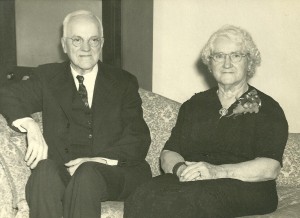
In closing his letter, Park wished “all the Ralph avenue people…enough to talk about to last them for years to come.”
It is likely that Park’s wish came true.
Park would pass in 1927, but Miss Twaddle, who gave him eight children in their 27 years together, lived until 1971 when she reached the ripe old age of 92. (Her last child died just five years ago in 2009.)
O, and by the way, the Ralph Avenue men were all wrong about Park’s age – he was 37.
———————————————————————————————————————–
 The story you have just read was composed from extensive historical research conducted by The Brownstone Detectives. We perform in-depth investigations on the historic homes of our clients, and produce for them their very own House History Books. Our hardbound books contain an illustrated and colorful narrative timeline that will bring the history of any house to life. Contact us today to begin discovering the history of your home.
The story you have just read was composed from extensive historical research conducted by The Brownstone Detectives. We perform in-depth investigations on the historic homes of our clients, and produce for them their very own House History Books. Our hardbound books contain an illustrated and colorful narrative timeline that will bring the history of any house to life. Contact us today to begin discovering the history of your home.